For millennia uncounted, that ghostly ribbon of light that we are part of, the Milky Way galaxy, has drawn us to look skyward at night with wonder and awe. And, to question who we are, and how our speck of a planet fits into this universe of indescribable vastness.
But, that connectedness to the celestial envelope surrounding our pale blue dot in the cosmos is in danger of being blotted out. Artificial illumination, that “always on” ambient light from city signs, streetlamps, and the like, has blinded us to that night sky and our connection to it for many. Most city dwellers have forgotten what stars look like. And, many city kids have grown never having seen them. Think about it: when is the last time you looked up and saw stars? Or, that ribbon of our own little arm of our own little galaxy?
Fortunately, there’s a way to correct your celestial deprivation: Michigan’s Headlands International Dark Sky Park. Located just two miles west of downtown Mackinaw City, at the tip of the Lower Peninsula, in Emmet County, it’s been open as a sky park since 2011. It’s a credit to the vision of dedicated individuals, most of all Mary Stewart Adams, park program director, Beth Ann Eckerle, Emmet County director of communications, and the county board of commissioners.
“That’s what sets Emmet County apart,” Eckerle said. “We’re all about the authentic, genuine natural experience for visitors and for the people who live here.”
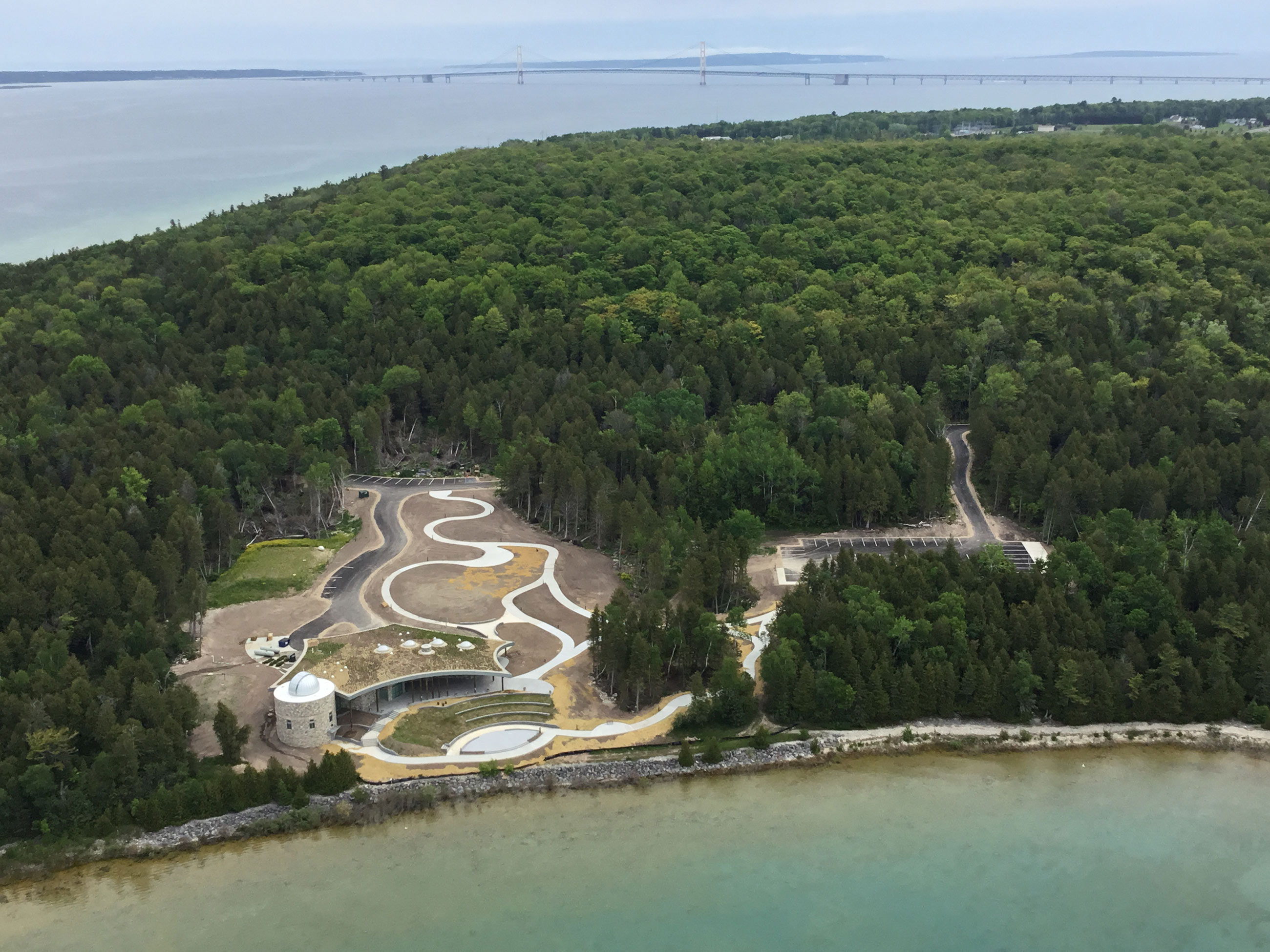
Foundations for the 600-acre park were laid in the 1990s. Prior to that, it was a private tract owned by Roger McCormick of Chicago’s International Harvester family. Story goes that in the 1950s, he dropped bags of flour from a helicopter to outline the property and then purchased it. He built a guesthouse (it’s available for rent) and a beach house with pool, but died before he could build his main house.
After the family foundation used the property to support Native American students, it worked with Emmet County, the Little Traverse Conservancy, Mackinaw City, and others to make it a park. Then, Eckerle said, along came storyteller and “astrosopher”—a term that fits well to describe astrologer/philosopher/storyteller—Mary Stewart Adams.
“She recognized we had something really special here,” says Eckerle. “She motivated the entire community to see that this is a resource needing protection. We in Emmet County have our water, our land, and we now have this, too. She led the initiative to develop Headlands Dark Sky Park. She really is its heart and soul.”
While visitors are welcome to bring small telescopes, Adams feels that naked eye observation is the best way to reconnect with the universe, and yourself, here.
“I come to this as a storyteller. My preference is to start with naked eye observation. Being able to identify the North Star and constellations this way is a lost art in an overly lit world,” Adams says.
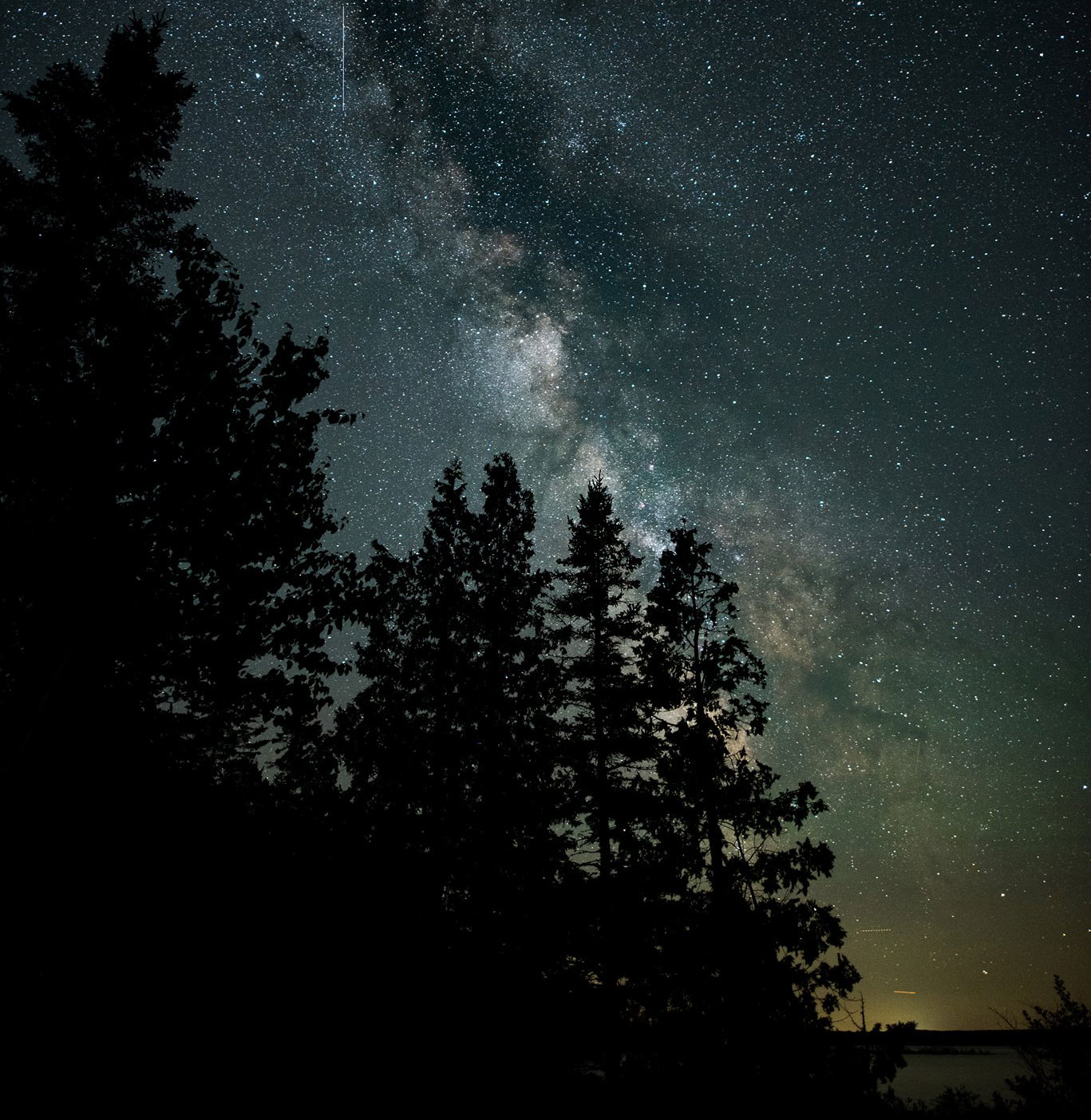
“Too many people don’t know how much star knowledge handed down over the centuries has been lost to the collective consciousness because of light pollution. We can learn a lot just being here. Looking up is how I can learn about the sky and myself. I see this as a reciprocal relationship. It’s not just finding out what’s out there, but also what it reveals about ourselves.”
Adams links that special connection to the history of humanity and the quest to find out what’s “out there.” By doing so, we also become more aware of humanity’s symbiotic relationship. Deep thoughts, sure, but they become clear after one visit.
In the rating system of gold, silver and bronze developed by the International Dark-Sky Association, Adams explains, Headlands, 6th to open in the U.S., and ninth to open worldwide (there are now 31) is one of the best, in the high silver tier.
“Each park is in a geographically unique place,” she says. “Being here brings its own sense of awe and wonder.”
For a typical visit, Adams recommends arriving in daylight to get your bearings and learn about its five miles of pathways. There is very limited parking near the prime viewing area along a quarter-mile of undeveloped shoreline.
“At dusk we close the gate to that lot, so know you’ll then be parking and walking a mile. You can bring backpacks, chairs, sleeping bags, telescopes and flashlights, but there is no camping, and we ask that you put a red filter over any white light,” she says. A red balloon works.
On the way, you’ll walk through one of the last old growth forests in Michigan’s Lower Peninsula. Every tenth of a mile, a cultural interpretation station gives you deeper insight with information about each planet in our solar system and how they were discovered, expressed through literature, art, myth, and understanding of the ancients who named them.
Adams encourages bringing young children, an increasing number who may have never seen stars because of where they live. “It’s a good idea to try to point out some of the constellations, and let your child be in the wonder of it all,” she adds.
While others may look up and wonder how insignificant our planet is, Adams invites you to think otherwise. “When I look into the vastness, it is a tremendous affirmation that I belong to something great. We owe it to our humanity to be familiar with our environment. That local environment extends as far as the eye can see, and we can see the Andromeda galaxy without a telescope. And that’s a long, long way.”
When You Go
First off, it’s Mackinaw City, but Mackinac Island, and both are pronounced Mackinaw. Names are a bow to the area’s French, then British, heritage.
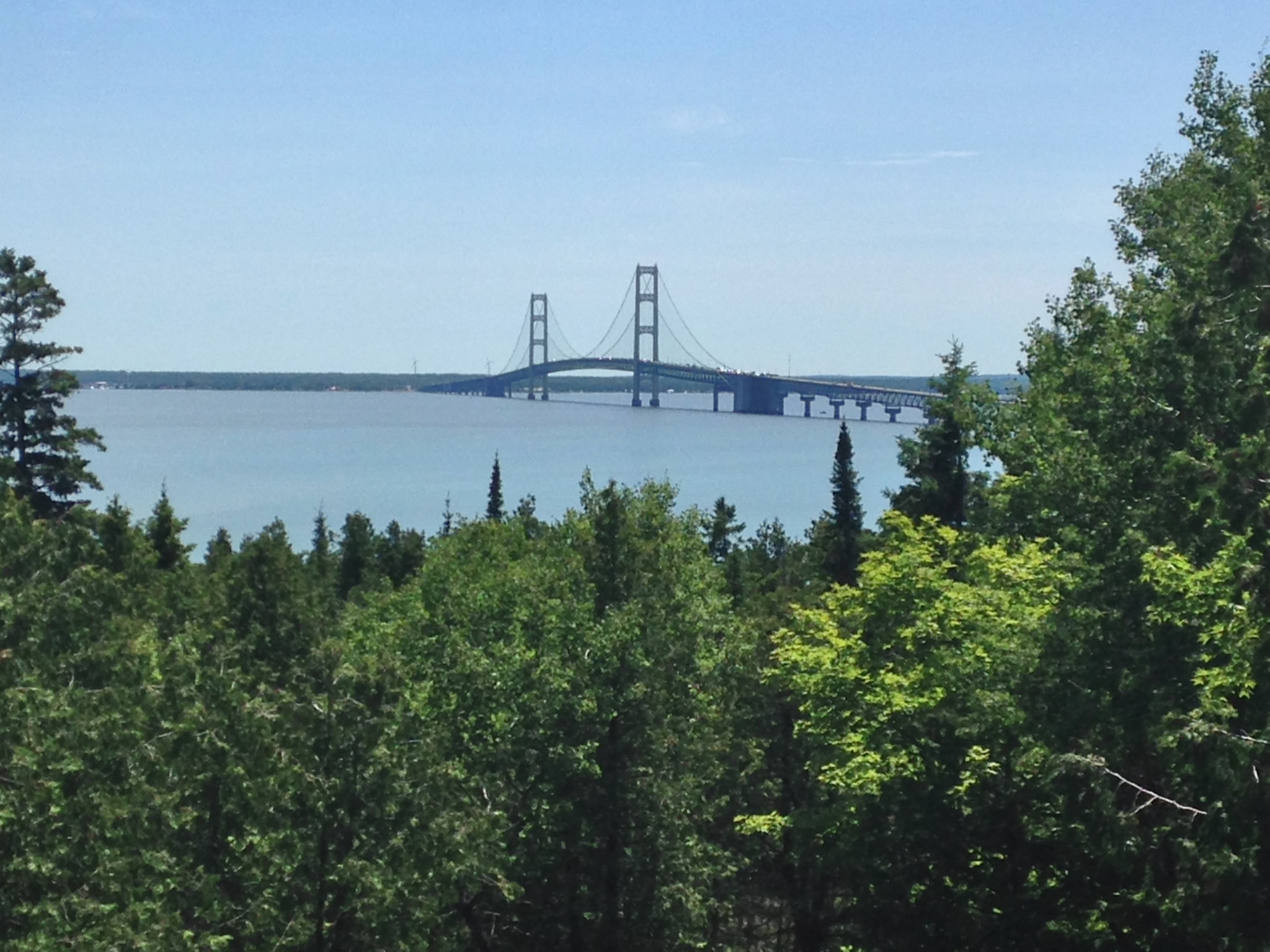
There’s plenty of camping nearby. Wilderness State Park’s 10,000 acres of stretches a finger into Lake Michigan near Headlands International Dark Sky Park There are both beachfront and forest campgrounds and lots of hiking trails, plus biking. Straits State Park campground is at the north end of the Mackinac Bridge, and a stay there gives you a different perspective of your surroundings. There are also plenty of private campgrounds on the Lower Peninsula side, including Mackinaw Mill Creek Camping and Mackinac City/Island KOA in Mackinaw City and St. Ignace, among others.
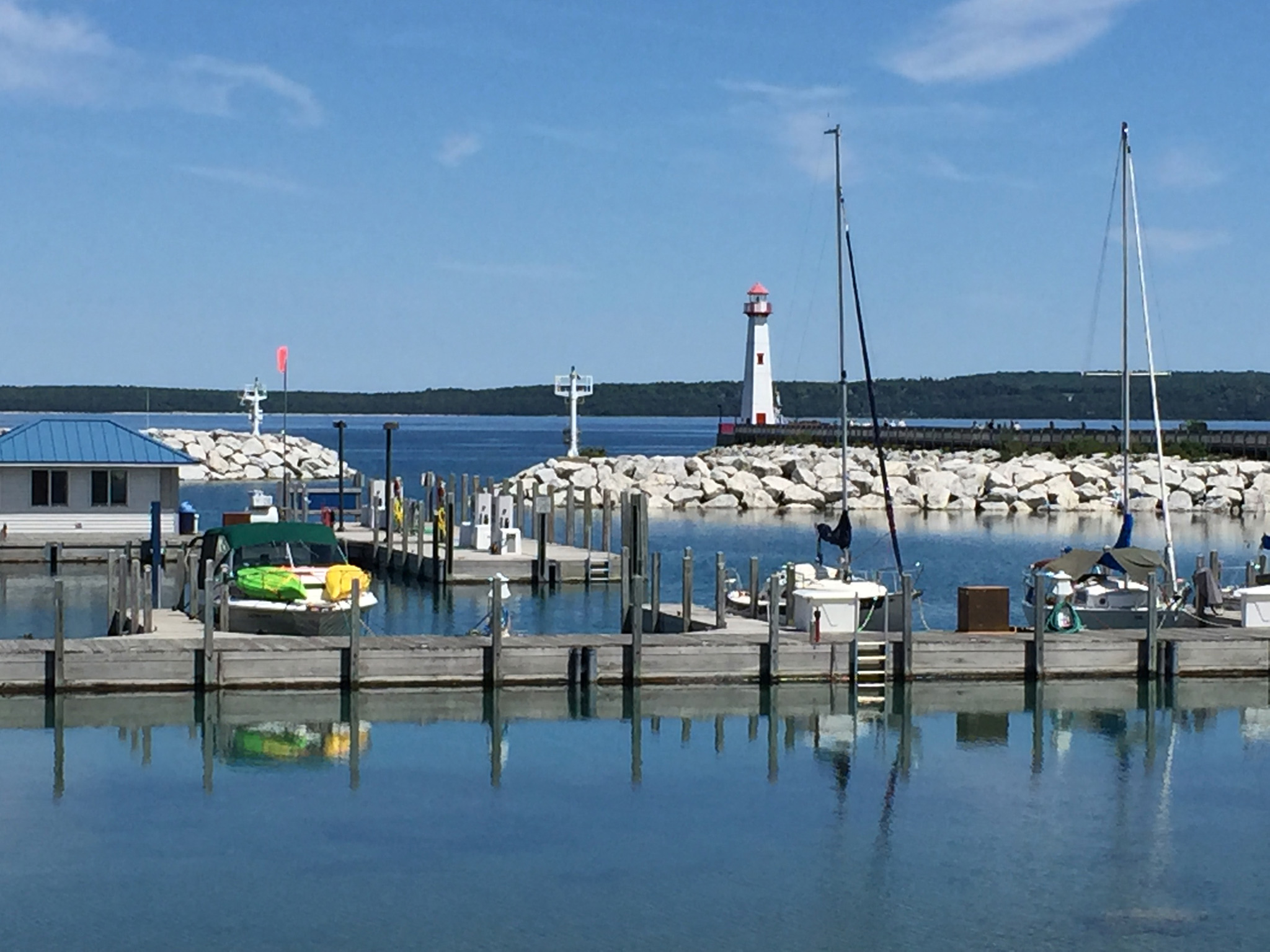
Monthly guided park programs at Headlands run all year. In April, for example, the focus is on the annual raptor migration, including the tiny native saw whet owl, which relies on the park’s darkness to survive. The park, Adams says, is one of the best places in the Midwest to view the event each spring and fall, when bald and golden eagles and other raptors and birds use the park as a stopoff or navigation point on this important migratory route.
A popular August presentation is called “Lights Out In Northern Michigan.” Local communities compete to see which can become the darkest. Even the Mackinac Bridge Authority cooperates by turning off bridge lights. Check the park’s website for a program guide, midarkskypark.org.
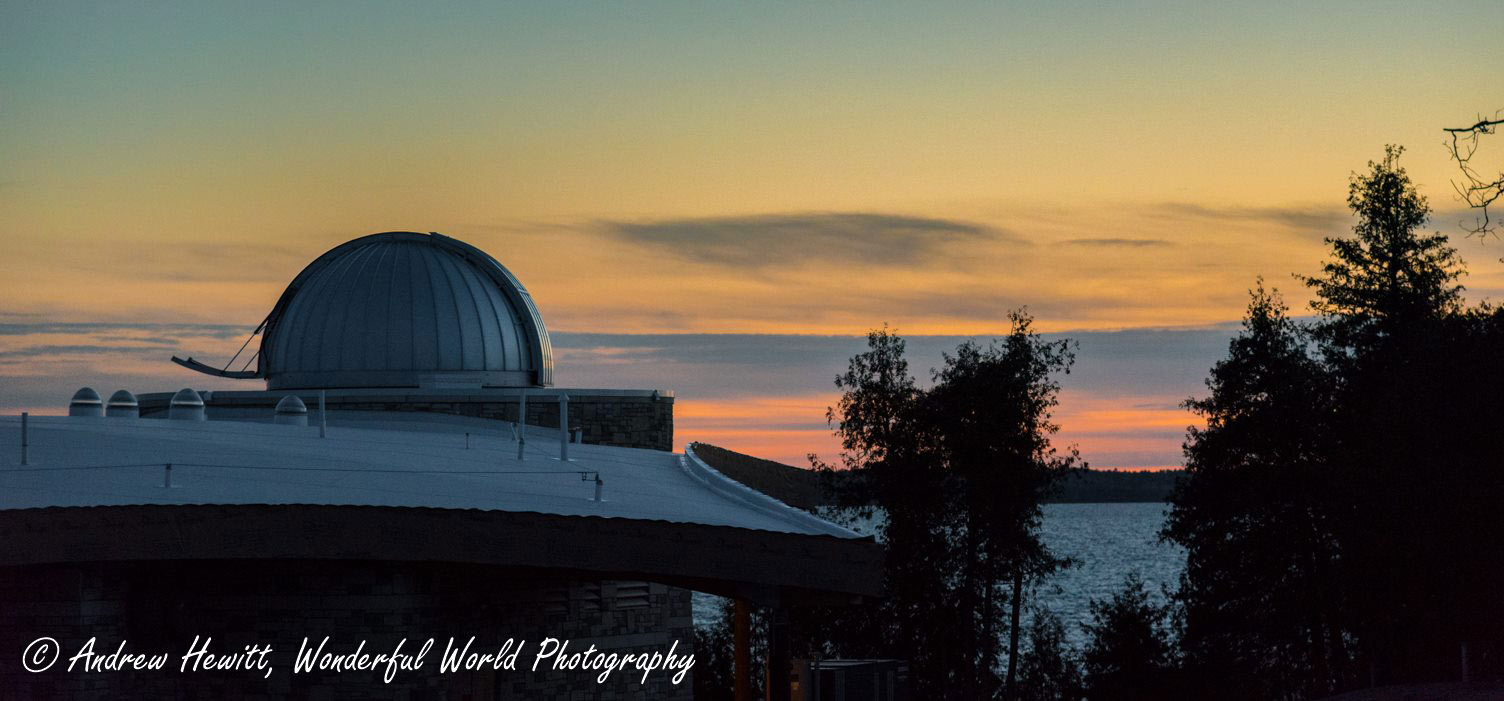
Add to that, the annual Perseid meteor shower show, peaking Aug. 12-13, and this year, the solar eclipse on Aug. 21. While this part of North America won’t be “in totality,” as astronomers say, we’ll have plenty of shadows at midday to keep you fascinated. If you miss this one, plan on seeing another here that will include near totality across much of Ontario in 2024.
This June marked the dedication of the park’s Waterfront Event Center. The building includes the 20-inch “plane wave” type Roger McCormick telescope for imaging, donated by the McCormick family. It’s located in a dome at the center, donated by Bloomfield Hills, MI’s Cranbrook Institute of Science.
There’s also a Lunt solar telescope for safely viewing the sun, plus a six-inch Takahashi telescope for viewing our own little corner of the Milky Way, the planets in our solar system. The building will host public viewing programs on a regular schedule posted at the Headlands website.
“One of the most important things about our programs is, we never cancel for weather,” Adams added. “There’s always something to learn about the sky even if it’s cloudy.”
Or, you can also wander those five miles of trails, home to the rare dwarf lake iris, which only grows in this region of the world, she said.
Viewing pads also are being built to give amateur astronomers stable telescope and photo platforms. An open-air amphitheater also will hosts programs about the sky, and what you can learn, and teach. For more information, go to midarkskypark.org.
Other things to do while you’re here include visiting Mackinac Island, Colonial Fort Michilimackinac under the southern end of the Mackinac Bridge, portraying colonial life here under both French and British rule, and seeing Old Mill Creek State Park.
Reach the island by ferry from either Mackinaw City or St. Ignace. You can bike ride there—bring your own on the ferry if you wish—along paved trails, or try some of the mountain bike trails on the island’s north side, rated from beginner to expert. And of course you can’t pass up the island’s famous fudge shops, its main “export.” In fact, locals call island tourists “fudgies.” My favorite: Joann’s. If you don’t get to the island, there’s a JoAnn’s shop in Mackinaw City, too.
There are no cars on the island, so your bike, or getting a rental, a carriage, or a horse from the town stable, or walking, are the ways you’ll get around. If you can, partake of the buffet-lunch-to-die-for at Grand Hotel, which also features the world’s longest front porch at 700-feet-plus. And, it’s Grand Hotel, no “The.” Or, park your LTV at the ferry and stay overnight there—bring a sport coat and tie and dress for ladies for dinner, which is included with your stay as well as breakfast–or one of the other beautiful island hotels. For more on the island, go to www.mackinacisland.com, or www.mackinacisland.org.
Back on the Lower Peninsula, Mill Creek State Historic Park is a few miles south along the Lake Huron side of the region. There you’ll experience what life may have been like as you tour a water-powered sawmill, a replica of one used to cut lumber for buildings on the island in the 18th century. For Mackinaw City info, go to mackinawcity.city, and for the area’s state parks, mackinacparks.com.


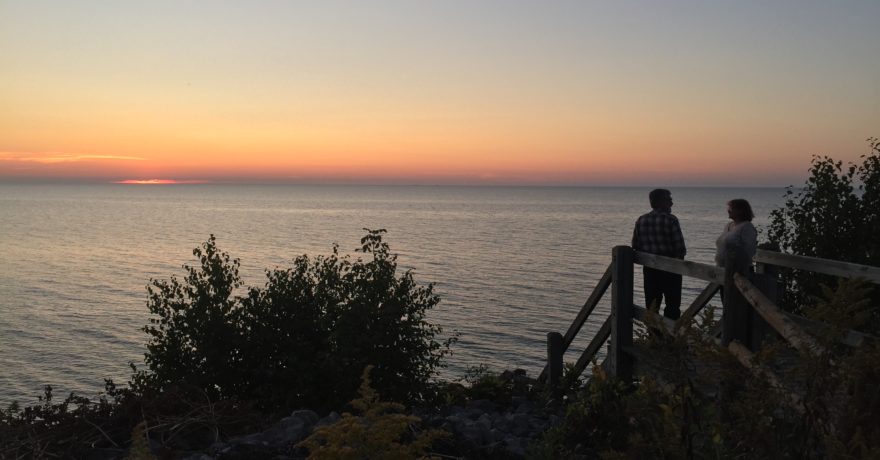

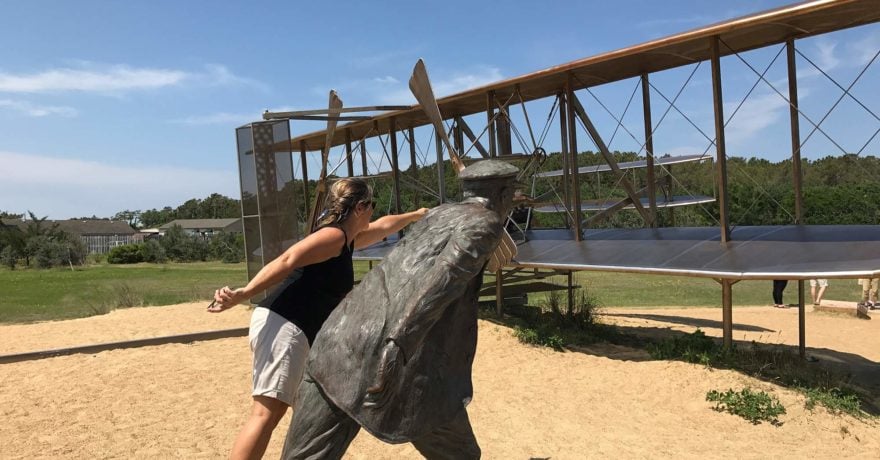
Comments